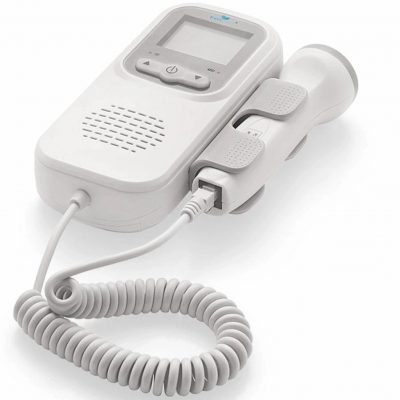Project Report For Fetal Doppler Machine
Introduction
Project report for Fetal Doppler Machine is as follows.
A fetal Doppler is a portable ultrasonography equipment that employs sound waves to listen to a fetus’ heartbeat. Healthcare providers and midwives use these medical devices as part of routine prenatal care beginning in the second half of the first trimester of pregnancy. However, its long-term health effects are unknown and its use may lead to inaccurate conclusions about the fetus, so its use outside of a medical setting is not recommended
During the first 12 weeks of pregnancy (1st trimester), your baby’s heart beats very swiftly. However, because newborns are so little, it is difficult to see their heartbeat. The foetus’ heart rate settles into the usual range of 110-160 beats per minute as she grows. During your visit, your doctor will most likely use a foetal Doppler to ensure that your baby is well. If you are being watched at home, your medical team may ask you to check the heart rate of your baby.
Sound comes out of the speaker of the main unit. Some dopplers display the heart rate of the body, while others require a manual count by the doctor. Fetal heart sounds are usually 110 to 160 beats per minute. It is important to monitor the fetal heart sounds during labor because heart sounds often change with activity and labor.
An irregular heart rate might signal that the foetus isn’t getting enough oxygen or that there are other issues. After recording the fetal heart rate measurement, the doctor reviews the results. A baby’s heart rate problem is rarely identified and requires further monitoring or treatment. You or your baby have no physical risk from fetal heart rate monitoring. However, it can be disturbing when your baby’s heart rate is outside the normal range. If your measurements are out of range, or if you have any concerns or questions about at-home fetal heart rate monitoring, talk to your doctor.

Uses Of Fetal Doppler Machine
An ultrasound technique known as foetal Doppler uses sound waves to listen for foetal and placental noises. It got its name from the mechanism that uses the Doppler effect. That is, it detects how the frequency wave (in this case, the sound wave) changes as the observer moves closer or farther from the source. Unlike ultrasound scans, fetal Doppler produces only sound, not images.
A fetal Doppler consists of two parts: a probe and a main body connected by a cable. To use the device, a healthcare provider applies gel to the end of the probe. The gelled probe is then moved around the pregnant woman’s bare abdomen until a fetal sound is heard.
Project Report Sample On
Fetal Doppler Machine
Get Completely Custom Bankable Project Report
Market Potential Of Fetal Doppler Machine
The worldwide fetal monitor market is expected to be valued $3.7 billion in 2022 and $5.2 billion by 2027, increasing at a CAGR of 7.3% between 2022 and 2027.
The global fetal monitoring market include an increase in the prevalence of cardiopulmonary diseases, technological advancements such as non-invasive surgeries, an increase in government and non-government initiatives for maternal and foetal health around the world, an increase in awareness and willingness to invest in the development of foetal monitoring, and an increase in the number of post-term pregnancy, multiple pregnancy, and premature delivery cases.
This market comprises equipment for measuring fetal heart rate, fetal movement, and uterine contractions. However, high equipment costs, a lack of regulatory rules, technical constraints, and subjective interpretations are some of the factors impeding growth in the worldwide foetal monitoring industry.
The market is expected to rise due to an increase in demand for fetal monitoring throughout pregnancy. Technological developments, as well as an increase in preterm births and birth rates, are predicted to drive future worldwide market expansion.
Furthermore, the rise in premature birth rates, haemorrhage rates, and the increased need for foetal monitoring supplements boost the global market. Furthermore, the rise of portable and wireless goods and technology, as well as unexplored emerging economies, provide significant worldwide growth potential. Stringent regulatory processes, low birth rates, and expensive equipment costs, on the other hand, stymie the worldwide foetal monitoring industry.

